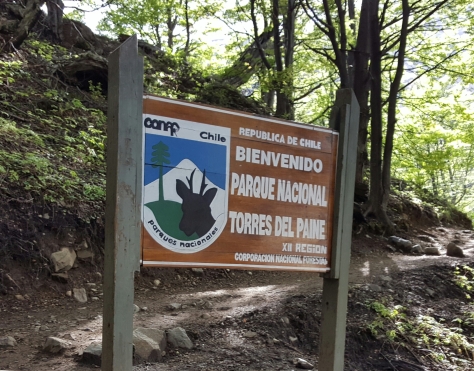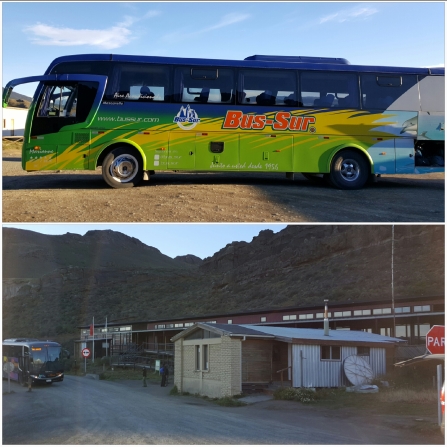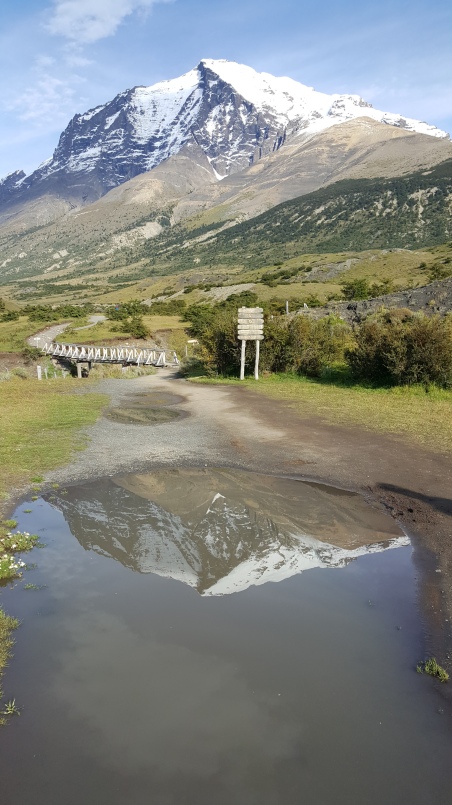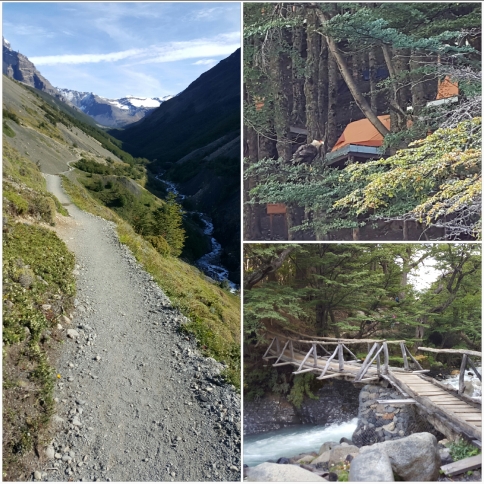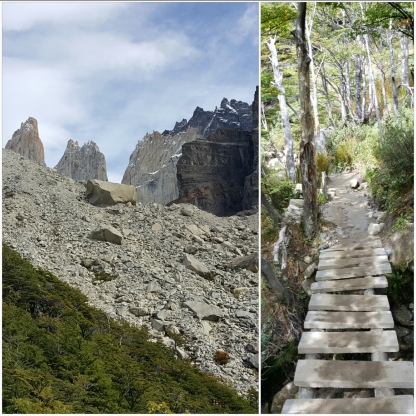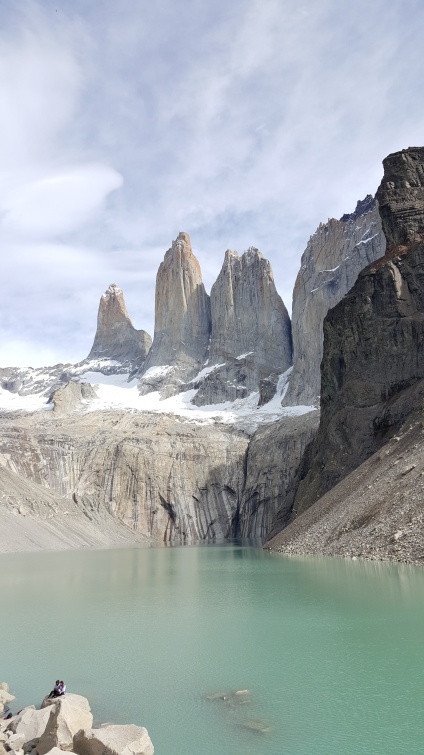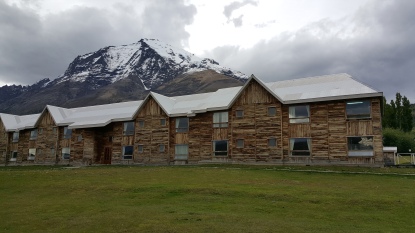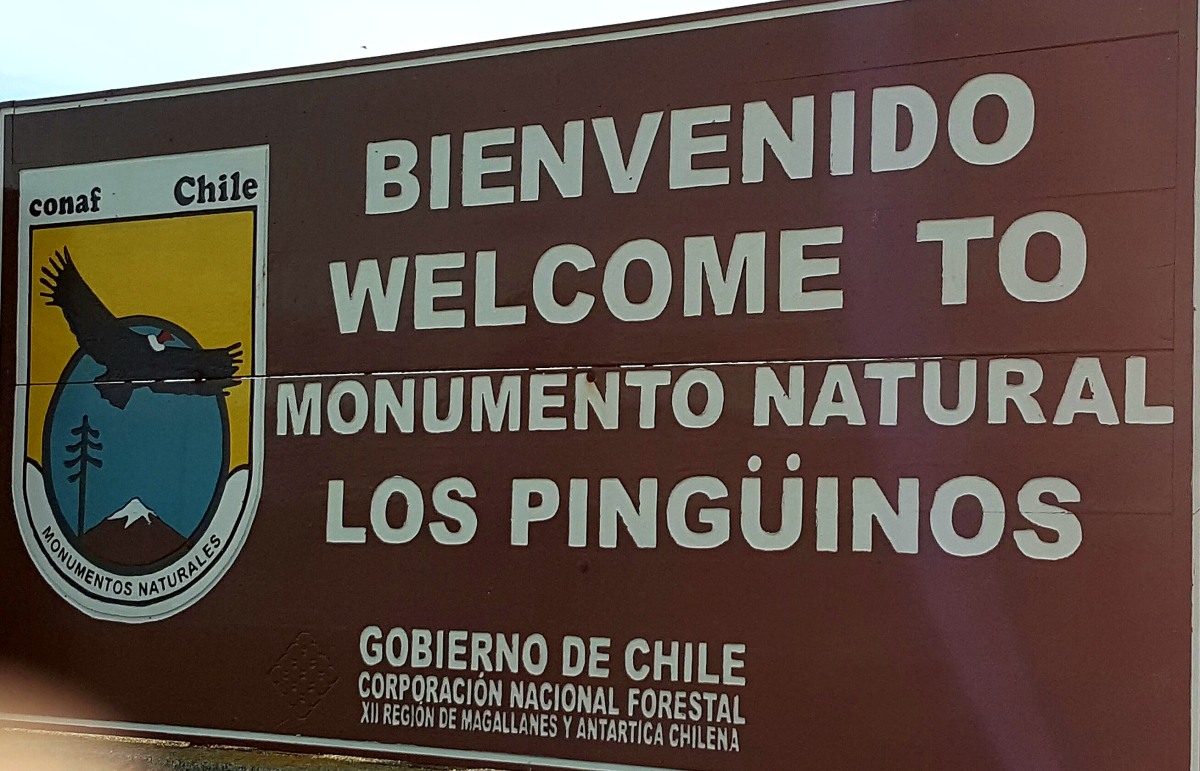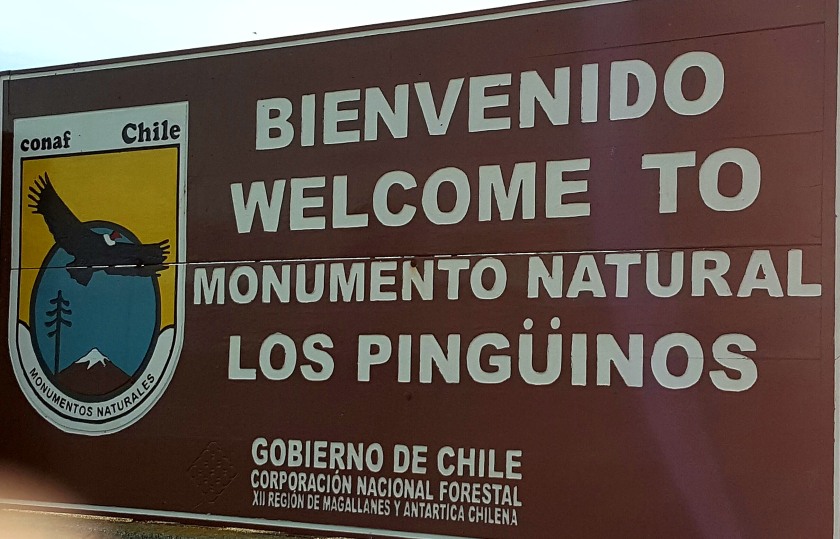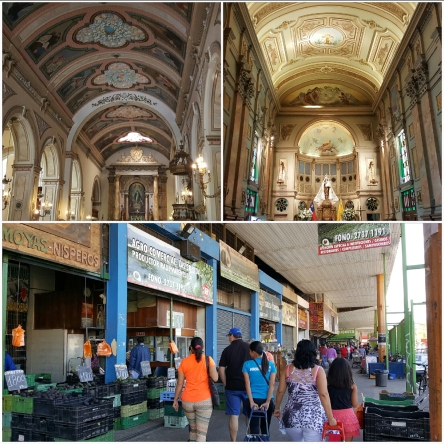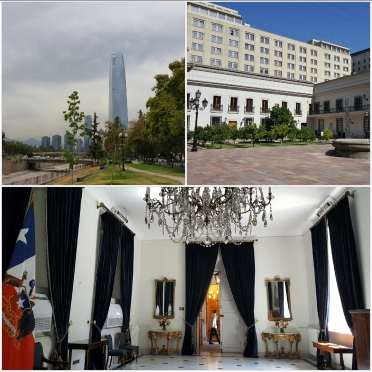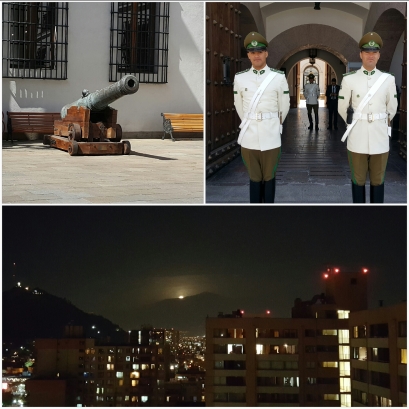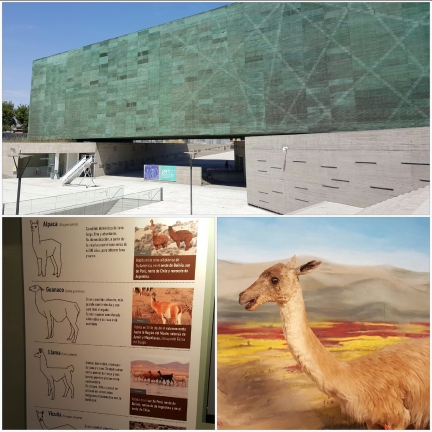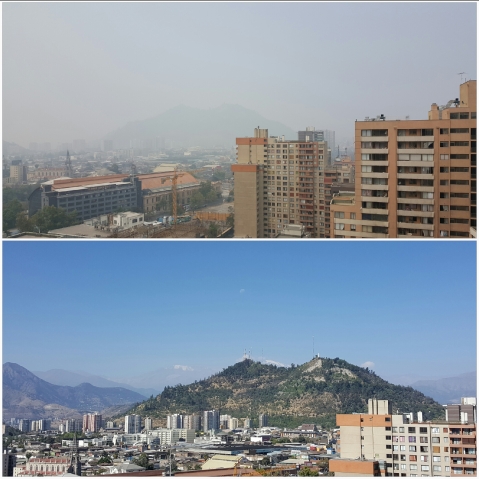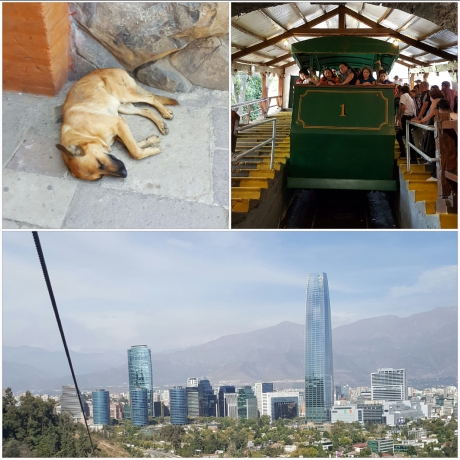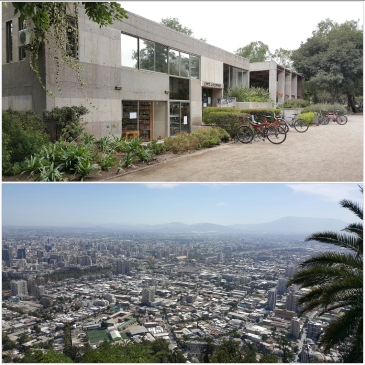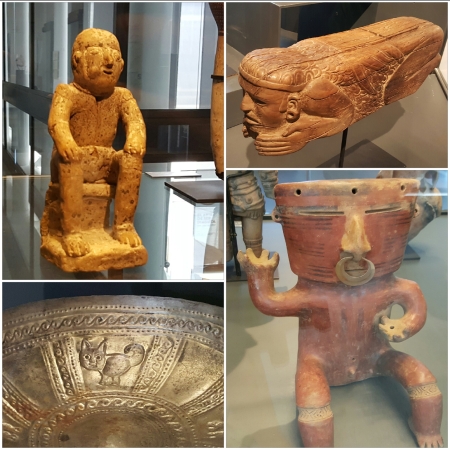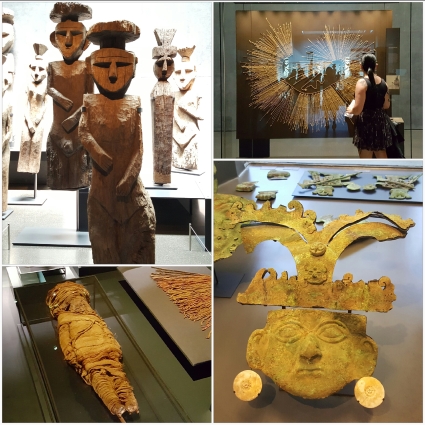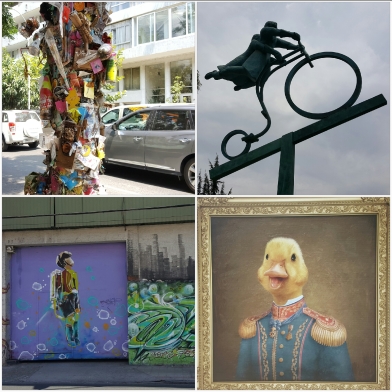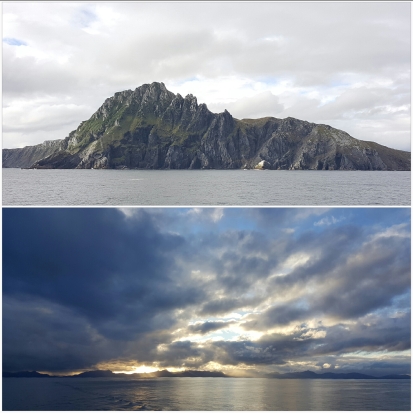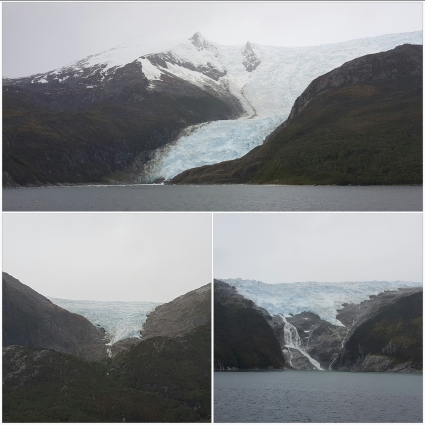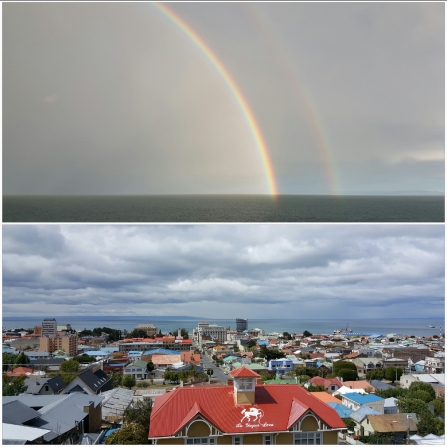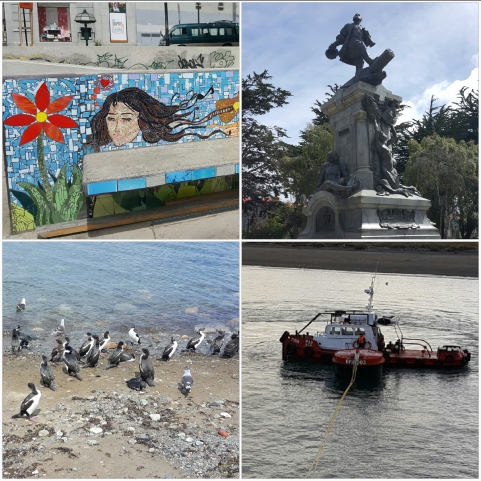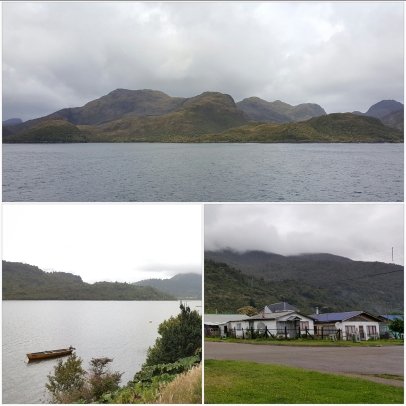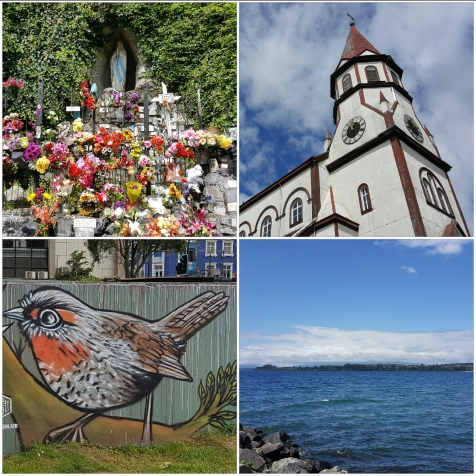Waking up the day after the Torres Mirador hike was a new lesson in leg soreness. Our rental apartment’s bedroom was on the second floor, and I made sure I only had to go down the stairs once. I don’t even want to think about the multiple minutes it took to get to the first floor. My knees seemed as though they were discovering their ability to bend for the first time. Clearly, they were not excited by that prospect.
Once again, we made sure we had our our layers, snacks, and the makings of lunch sandwiches, and were out the door before 7 a.m. The bus ride was gorgeous again, watching the sun rise over nearby mountains, the driver honking to shoo herds of guanacos off the roadway. At Laguna Amarga, we showed our stamped tickets from the day before and headed back to the bus. This time we were headed to the last stop at Pudeto, about another half an hour beyond the entrance. After a short wait, we were joined by many of the other passengers, most of whom were heading to the ferry and longer hikes.
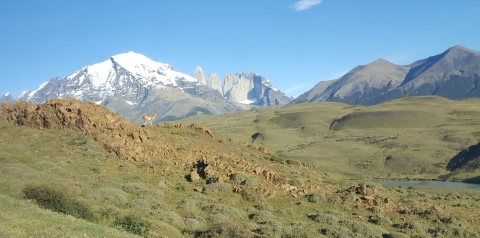
Our bus arrived at Pudeto just after 10, and we breakfasted at one of the picnic tables behind the cafeteria. Once again, the sun was warm and we had over-layered in anticipation of bad weather. A couple we had seen the previous day joined us as we were finishing and were impressed we had done the entire Torres hike in a day with two bus rides thrown in. They were smart enough to have at least one knee brace, however. We settled for ibuprofen.
The Cuernos Mirador trailhead begins a few hundred feet up the road from Pudeto, which is thankfully a smooth slope. We picked this trail to do after the Torres Mirador because it was much shorter and much flatter. We also wouldn’t have to rush to make it back for the 6:30 bus pickup so we’d be able to spend more time enjoying the vistas.
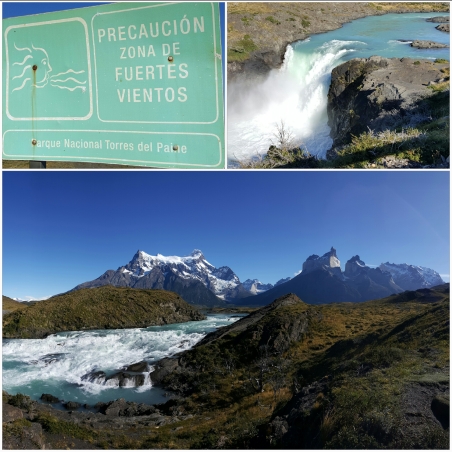
This trail begins as a flat walk to the Salto Grande waterfall. The falls crash into a small, dark-walled canyon with smaller torrents above and below. Like many places around Torres del Paine, the canyon walls reveal a small section of the rock layers that help form the park’s geology. These layers are made up of stone of various hardnesses, so they often wear unevenly. In some spots, this means that fins of rock arc up from their surroundings and create formation that almost look like manmade fences. Just beyond the waterfall is a viewpoint of the Condor and Cuernos mountains where many day-tours stop.
But the trail continues and so did we. By now, our legs had warmed up to the idea of some more walking and hurt less. The next section of the path took us gently around and through areas of forest that had been burned over in human-started forest fires. While many of the trees in this area are still standing, their bare branches eerily reach toward the sky as if in supplication. This area perfectly illustrates the reason the park is so strict about camp fires and stoves – the wind can pick up in seconds and the flames can be out of control in moments. As far as I know, all the recent fires have been caused by tourists. Fines have been increased and enforcement is strict.
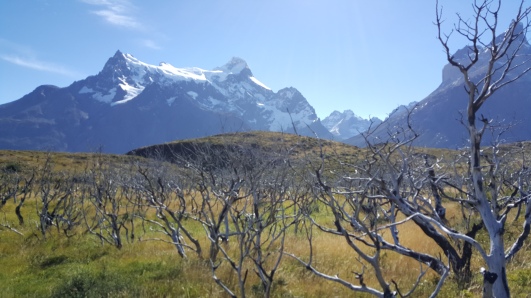
Down past a lake and up over the final ridge, and we were at the Mirador. There were a handful of people snacking on the rocks, but this trail sees much less use than the Torres does. We settled in and ate our lunch, chatted, took pictures, soaked in the views. Echoing across the lake, occasional glacial crashes could be heard. We saw one small section collapse and side down a rock face – what must have been hundreds of feet but looked small across the distance.
Patience paid off and eventually we were the only ones at the look out. Without other voices and low wind, we could hear the ice and rocks grinding almost continuously. We could watch wind push sparkly waves across the lake at our feet. It was absolutely enchanting. Every direction you can look from this point is beautiful.
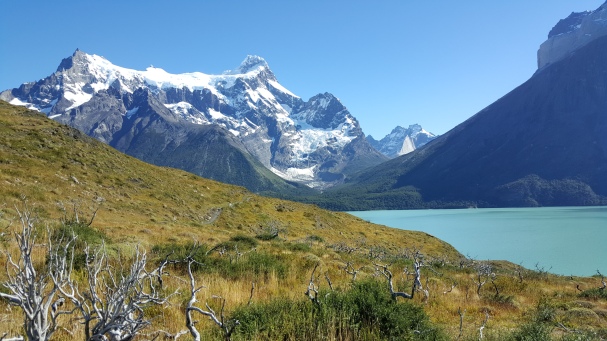
Again, the wind picked up suddenly in the afternoon, this time about 3 p.m. Signs at the beginning of the trail warn that gusts can reach dangerous levels quickly and so we donned our jackets and started back. As we walked, the breeze only got stronger, confirming our decision. By the time we reached the waterfall viewpoints, there were moments where it was difficult for me to walk when the gusts swept in just right. Not quite Iceland bad, since we could still breathe facing into the wind, but gaining strength. The spray from the falls was now reaching up and over the viewpoint and it seemed wisest to head back to the cafeteria.
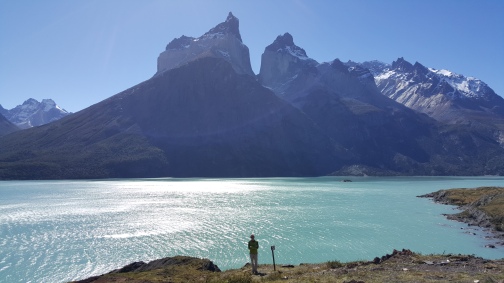
We spent the last couple of hours before our bus arrived sipping beer and warm coffee in the cozy cafeteria building and watching clouds being pushed over the distant mountains. After an hour or so, the ferry arrived and we were joined by dozens of others.
While we didn’t get to see the iconic glaciers or trek the ‘W’ or ‘O,’ we at least got a decent taste of Torres del Paine. It really is one of the most spectacular places in the world. The two days partially filled our hiking meter, but left us craving hikes in the Pacific Northwest. We’ll have a lot of trail miles to make up for when we return, though I am so happy to have seen and hiked in one of Chile’s most iconic landscapes.
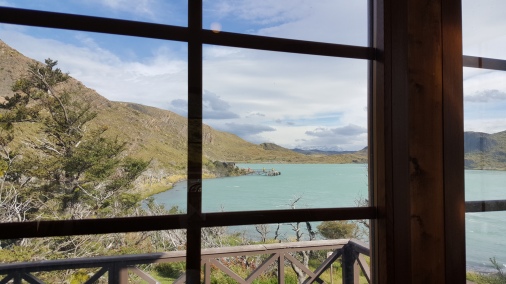
In case anyone wants to day hike from Puerto Natales, there are several bus companies that make daily trips to Torres del Paine. We used Bus Sur because they let us buy tickets in advance online (though if you buy in person at the terminal, you can get a discount on round-trip tickets). Other companies like Juan Ojeda, Maria Jose, and Bus Gomez also make the trip. As a general rule, buses leave Rodoviario Terminal in Puerto Natales between 7 and 8 a.m. in the morning and arrive at various points in the park between 9 and 11. For day hikers, the returning evening buses leave between 6:30 and 7:45 p.m. and arrive in Puerto Natales between 9 and 10 at night. It makes for a very long day, but there are several hikes that can be done in that time.
If we opted to do the Torres hike again, I’d go on the same 7 a.m. Bus Sur trip since it is the first one to arrive and that saves time waiting in line during the registration process. But I’d consider taking a later return on a different line in order to have more time at the Mirador. After all, it is a shame to hike all that way and turn right around again. And that also gives more time for the shuttle to show up and get back to Laguna Amarga.
(Also if you happen to be at Rodoviario Terminal and the small bakery/minimart across the street is open – get their torte de calafate. The berries on top look like blueberries but are more seedy and bitter. It is an absolutely delicious dessert!)
